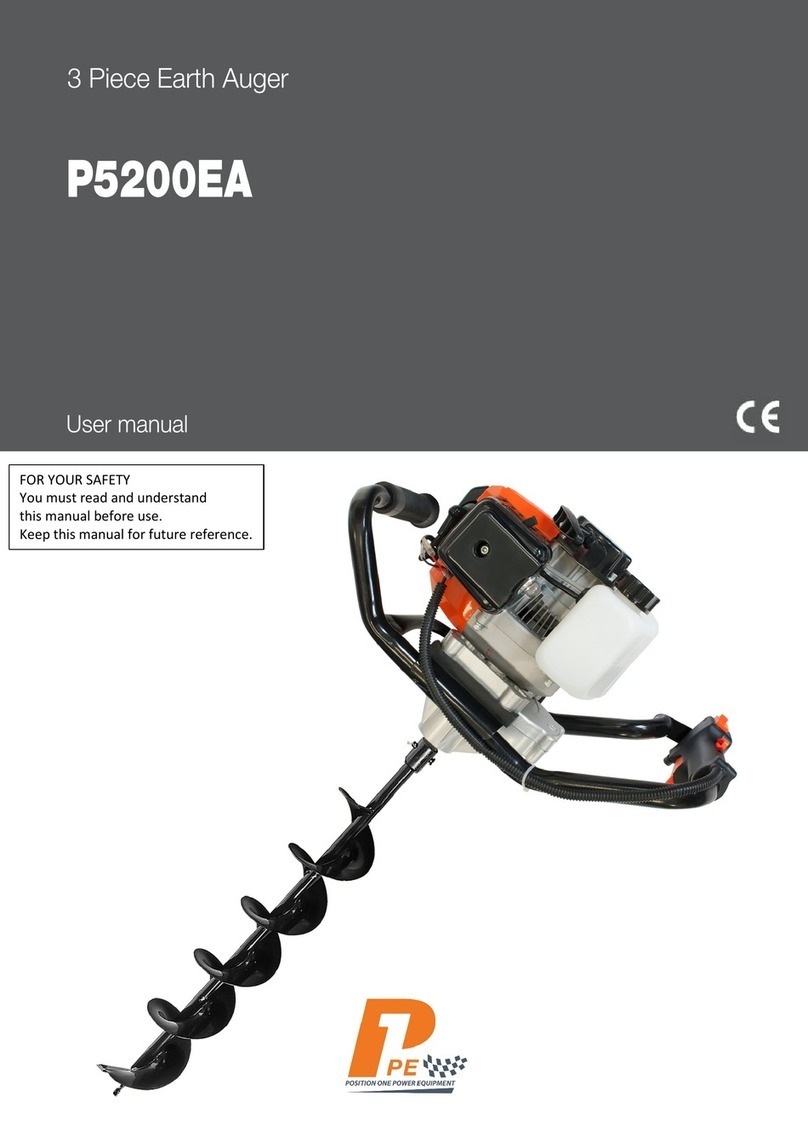2.15
NEVER make adjustments or repairs with the machine running.
2.16
DO NOT use the machine if it is damaged.
2.17
NEVER remove any of the safety devices on this machine.
2.18
Check the area before use to ensure it is clear of any obstructions, cables or
obstacles that may cause damage to the cutting heads.
2.19
NEVER leave the machine unattended.
2.20
Maintain a proper footing when using the machine. DO NOT use the machine while
standing on a ladder or any other unstable surface.
2.21
Keep all other persons or animals at least 15m from the work area.
2.22
Keep hands and feet away from the cutting heads during operation.
2.23
DO NOT use the machine if you are tired, ill or under the influence of medication,
drugs or alcohol.
2.24
If you strike and obstacle, stop the engine and check the cutting head. Repair or
replace as needed.
2.25
Before starting, after failure or impact, make sure to check the machine is in good
condition.
2.26
Improper maintenance, the use of non-compliant spare parts or the removal of safety
devices can result in damage to the unit and serious injury to the operator.
2.27
Secure the unit during transport to prevent fuel loss, damage to the unit or injury.
Always install the protective part of the cutting blade before transportation.
2.28
On machines with a clutch, you must check regularly that the cutting accessory stops
rotating when the engine is idling.
2.29
Do not store the machine in a closed area where fuel vapours may reach an open
flame or ignition source.
2.30
ALWAYS turn the machine off and allow to cool before carrying out any
maintenance, repairs or refuelling.
2.31
NEVER operate the pruner/hedge trimmer at an angle greater than 60°.
This will reduce the risk of being struck by falling objects duringoperation.
2.32
When you’ve finished cutting in one location and wish to continue working at another
location, turn off the engine, lift up the unit and carry it, paying close attention to the
blade.
2.33
Always cover the blades to prevent injury during transport.
2.34
When carrying, always cover the blades to avoid injury or damage.
2.35
Never transport the machine over rough ground or long distances by vehicle without
removing all fuel from the fuel tank.
2.36
Kickback may occur when the nose or tip of the guide bar touches an object or when
the wood closes in and pinches the saw chain in the cut.
Kickback or pinching may cause a fast reverse action, kicking the guide bar up and
back towards the operator.
Either of these reactions may cause you to lose control of the saw, which could
result in serious personal injury.





























